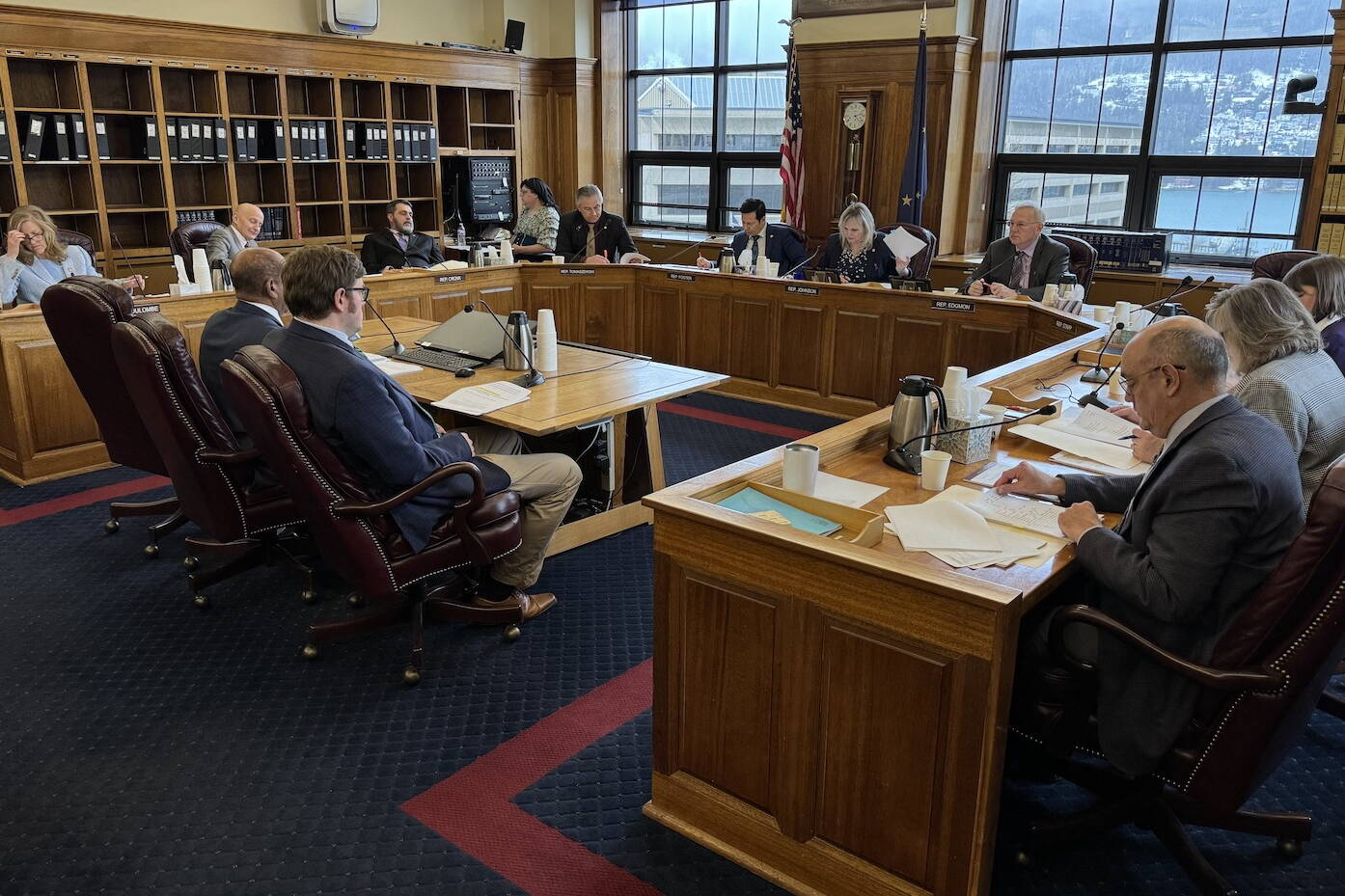A key Alaska House committee has approved funding for the most school maintenance projects in several years — from new roofs to copper pipe and electrical replacements.
The finance committee advanced a $552 million construction and renovation spending plan that includes a huge increase for school maintenance. If adopted, the $63 million earmarked for major maintenance projects would be the most approved by the Legislature since 2011.
“We need everything we can get,” said Lon Garrison, executive director of the Association of Alaska School Boards. “I’m thrilled to see it got on there and I’m hopeful it remains.”
The finance committee is usually the penultimate legislative step for the state’s annual capital budget, which funds renovation and construction projects statewide.
The Alaska Senate approved a draft of the capital budget last month, and the House Finance Committee added about $107 million to that draft under a prearranged agreement with the Senate, then voted Friday to advance the revised budget to a vote of the full House.
The $552 million agreement covers only general-purpose state spending. If fee-funded programs and federal funding are included, the capital budget exceeds $4 billion.
That figure covers spending in the next fiscal year, which starts July 1, and additions to the current fiscal year, which ends June 30.
“We think that the capital budget achieves the objectives of both the House and Senate and the governor, and it’s based on life-health-safety needs, as agreed on beforehand,” said Rep. Bryce Edgmon, I-Dillingham and the finance committee co-chair in charge of the capital budget.
Friday’s vote by the finance committee marked a return to regular order for the House. For the past several years, the capital budget has been rolled together with the operating budget in a single document. Last year, House lawmakers voted for just the second time in state history to approve the Senate’s version of the budget rather than negotiate a compromise between a House version and Senate version.
“This is the first year out of four that we’ve actually been able to see something in our hands and try to work together,” said Rep. Mike Cronk, R-Tok and a member of the finance committee.
“You can’t fund everything. But I think it was a pretty fair effort,” he said.
The finance committee’s work is subject to approval on the House floor and by Gov. Mike Dunleavy, who may reduce or eliminate line items.
Last year, for example, lawmakers approved $30 million for projects on school maintenance list, and Dunleavy vetoed $10.4 million from that figure.
This year, the Senate proposed spending $36.2 million on the state’s list of priority school maintenance projects, and the House Finance Committee bumped up that amount to $62.8 million, enough to fund the top 26 projects on the list.
The budget now has enough money to cover projects from the Northwest Arctic Borough to Ketchikan.
On the list is a new roof for Anchorage’s Homestead Elementary, three sites in the Southeast Alaska town of Wrangell, a new roof at Nome Beltz High School, and more.
“Most folks understand that major maintenance is imperative if we want students to be in an environment where they can actually learn. We haven’t invested in that in a meaningful way in a really long time,” Garrison said.
He called the additions a “pretty big deal” and said he’s glad things are moving in the right direction, but said the increase doesn’t cover everything that districts need.
Altogether, the major maintenance list includes almost $332 million in asks, covering 95 separate projects.
In addition to the big addition for school maintenance, the House Finance Committee added more than $10 million in additional spending on renewable energy projects, enough to cover biomass burning in Healy, solar in Southwest Alaska, and hydroelectric projects in Southeast Alaska.
There’s $2.5 million for road projects in the Matanuska-Susitna Borough and another $2.5 million for fisheries projects in that borough. The $750,000 approved for the Iditarod Trail Sled Dog Race by the Senate was boosted to $1.4 million by the House.
No date has been set for a vote in the House, but traditionally, the capital budget is approved as one of the last items before the Legislature adjourns its regular session for the summer. The session is scheduled to end by May 15.
• James Brooks is a longtime Alaska reporter, having previously worked at the Anchorage Daily News, Juneau Empire, Kodiak Mirror and Fairbanks Daily News-Miner. This article originally appeared online at alaskabeacon.com. Alaska Beacon, an affiliate of States Newsroom, is an independent, nonpartisan news organization focused on connecting Alaskans to their state government. Senior reporter Claire Stremple contributed to this article.
GET THE MORNING HEADLINES DELIVERED TO YOUR INBOX

